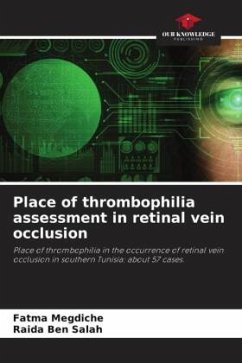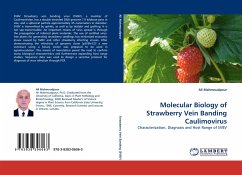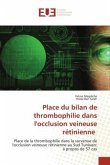Retinal vein occlusion is the second most common retinal vasculopathy (RVO) after diabetic retinopathy. Its semiology is multifactorial. The aim of this study was to evaluate the frequency of thrombophilia and to analyze its imputability in the occurrence of RVO. Protein S and Protein C were measured by the chronometric method, antithrombin by the chromogenic method, and the statistical analysis was based on Fisher's exact test. Thrombophilia was observed in 13 patients. An isolated abnormality was noted in 11 cases: 6 polymorphisms of Factor V Leiden (FVL), five of which were heterozygous and one homozygous, three C677T polymorphisms of the methylenetetrahydrofolate reductase (MTHFR) gene in the heterozygous state, and two deficiencies in PS. Our analysis statistically confirmed the involvement of hypertension, dyslipidemias, and LVF in the occurrence of RVO. Only the frequency of LVF was higher in the subgroup of patients without conventional risk factors (p=0.04). This could be due to the limited number of patients and the heterogeneity of RVO.
Bitte wählen Sie Ihr Anliegen aus.
Rechnungen
Retourenschein anfordern
Bestellstatus
Storno








